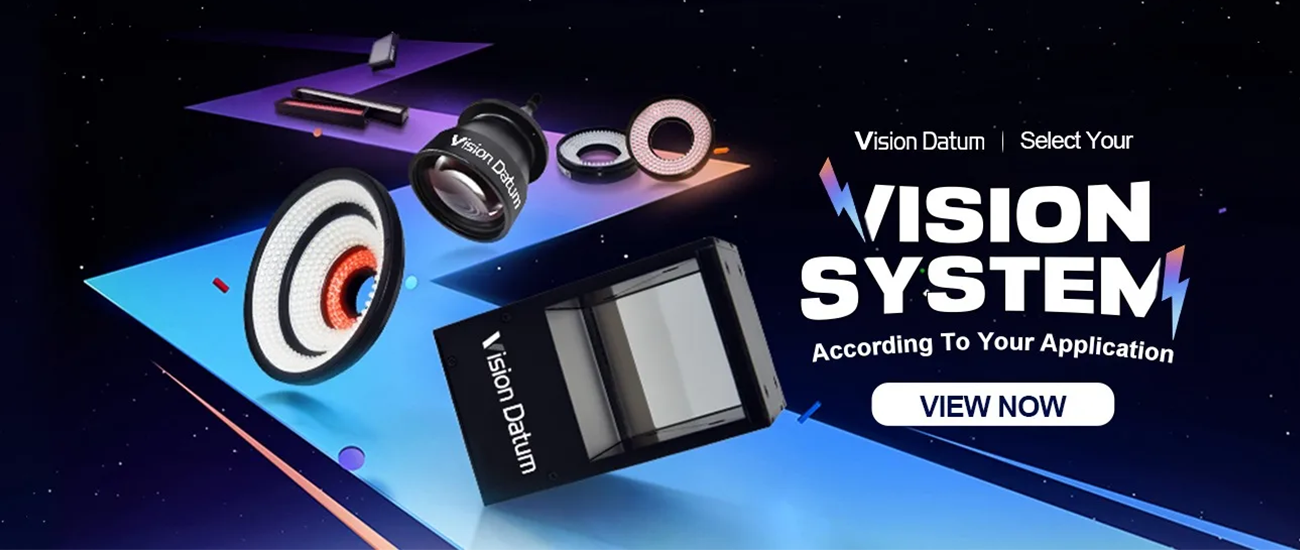How to choose the right illumination to detectscratches and marks human eye can't capture?
Working Principle
Coaxial illumination uses a beam splitter to project light directly along the optical axis of the camera or microscope. This setup ensures that light reflects evenly off flat surfaces and highlights minute surface details such as scratches and marks.Simply put, by arranging the light source coaxially with the optical system, the light is irradiated onto the target object in the same direction as the observation or detection path, thereby eliminating reflections and shadows and providing uniform and bright lighting.

Key Factors to Consider
Surface Material and Finish:
- Reflective Surfaces: Coaxial lighting is particularly effective for highly reflective and smooth surfaces where even minor defects can be detected.
- Non-reflective Surfaces: May require additional techniques to enhance defect visibility.
Type and Size of Defects:
- Ensure the lighting setup can highlight the specific type of defects (e.g., fine scratches, small marks) you're inspecting.
Environment:
- Consider ambient lighting conditions and how they might affect your coaxial illumination setup.
Selection Criteria
Intensity and Uniformity:
- Choose a light source that provides consistent and uniform illumination across the entire inspection area. Variable intensity can be beneficial to adjust for different surface finishes and defect types.
Color Temperature:
- Select a color temperature that maximizes contrast between the defects and the surface. Often, neutral white light (around 4000-5000K) is suitable for general inspections.
Beam Splitter Quality:
- Ensure the beam splitter has high optical quality and minimal light loss to maintain bright and clear illumination.
Compatibility with Imaging System:
- Make sure the coaxial illumination system is compatible with your camera or microscope, including physical mounting and optical alignment.
Implementation Tips
Adjustable Lighting:
- Use a coaxial lighting system that allows you to adjust the light intensity and angle to fine-tune the inspection setup for different surfaces and defects.
Testing and Calibration:
- Perform initial tests on sample surfaces with known defects to calibrate the lighting system for optimal detection.
- Use software tools to enhance image contrast and highlight defects more clearly.
Integration with Automated Systems:
- If using an automated inspection system, ensure that the coaxial lighting integrates seamlessly and enhances the system’s defect detection capabilities.
Set Up the Illumination System:
- Mount the coaxial illuminator properly along the optical path of your camera or microscope.
- Ensure the beam splitter is correctly aligned to direct light evenly onto the inspection surface.
Practical Steps
Identify the Inspection Requirements:
- Determine the specific type of scratches and marks you need to detect, and understand the surface characteristics of the materials you are inspecting.
Select the Right Equipment:
- Choose high-quality coaxial illuminators and compatible beam splitters.
- Consider additional features like adjustable intensity and focus.
Set Up the Illumination System:
- Mount the coaxial illuminator properly along the optical path of your camera or microscope.
- Ensure the beam splitter is correctly aligned to direct light evenly onto the inspection surface.
Perform Calibration:
- Adjust the light intensity and angle to achieve the best possible contrast.
- Use sample defects to calibrate and validate the inspection system.
Optimize and Test:
- Continuously test with different surfaces and defect types.
- Make necessary adjustments to maintain optimal performance.
Product presentation
Application
- Microscope inspection
- Industrial inspection
- Quality control
- Precision measurement
- Medical imaging
- Scientific research experiments
- Printing inspection
- Automated inspection system
Overall
Choosing the right coaxial illumination involves a combination of selecting the appropriate equipment, calibrating the system to your specific inspection needs, and continuously optimizing the setup. By considering the factors outlined above and following the practical steps, you can effectively detect scratches and marks that are invisible to the human eye, ensuring high-quality inspection results.

